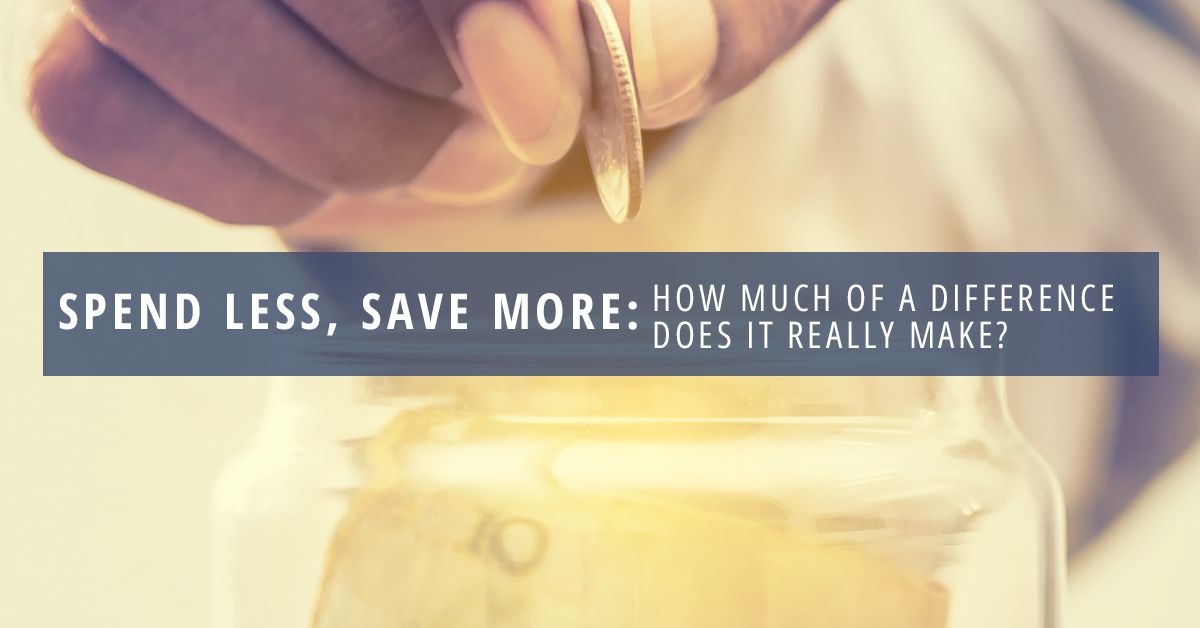If you have sought out even the most basic wealth management advice, you have heard this phrase before: spend less, save more. This is sound financial advice for a couple of reasons. First, many things you will want or need to spend money on will cost more than you make in one month. For example, if you are buying a house, you will need to come up with a down payment, which is typically 20% of the purchase price. If you spend and never save, there is no way for you to come up with that cash on the spot. In addition, presumably, you may one day no longer be able to work, or will not longer want to work. If you ever intend to retire, what will you do without a steady stream of income if you haven’t saved?
Despite the rather obvious truth that if you spend all your money, you won’t have any left to save or invest, you may still find yourself with a low balance the last couple of days before pay day every time. Let’s take a look from a wealth management standpoint and see exactly how much your unbridled spending is costing you.
Opportunity Cost
A qualified wealth advisor would tell you that the biggest issue with spending over saving is the opportunity cost. Let’s say you buy a car with a loan, and the payment is $400 a month. You can fit it in your budget so this purchase isn’t above your means, so you may think that it isn’t costing you more than that. In reality, this expense is costing you far more due to opportunity cost.
Opportunity cost is the loss you have when you make one choice over another. You can’t buy two things with the same money, so we face opportunity cost every time we spend. In this case, the opportunity cost that occurs from spending rather than saving is enormous. When you spend, there is no return to anticipate. But investing could exponentially increase your wealth.
Let’s say that instead of spending $400 a month on a car payment, you decided to invest it. Over the course of a year, that is $4,800 and $24,000 over five years. At the end of that time period, you’re out $24,000 with a car that is worth far less than that. Now, let’s say you instead invested those $400 every month for five years. If all you received was a five percent rate of return, after five years, you would have roughly $27,000. Would you rather have spent $24,000 or have gained more than $3,000 more than that? Now you’re starting to think like a wealth manager.
This wealth management example is only over a five-year period. Now imagine that money over the course of decades. Time is the biggest ally to a healthy savings account, and if you were regularly contributing to a retirement account instead of spending that money, you would be significantly more likely to see a big return on your investment.
Also keep in mind that this principle doesn’t just apply to major purchases like a car. Even small purchases you make every day add up. Let’s say you are spending $8 for lunch every day. You make plenty of money to cover that, and going out with your coworkers for a bite to eat is enjoyable. What’s the harm, right? Well, consider that cost over the course of five years: you have spent roughly $10,000 on lunch. If you instead brought lunch every day, costing you around $4 a day, that’s roughly an additional $5,000 that could be in your savings account.
Balance is Key
Wealth management needs to be realistic. Of course, you can’t just hoard all your money and never spend it. Life is short, and it’s natural to want to enjoy yourself. The occasional takeout lunch isn’t going to prevent you from achieving your financial goals. You could invest everything you have and never have the opportunity to benefit from your years of hard work because of an unexpected event. The key is balance. You need to both spend and save, but wisely. If you need help striking this balance, contact Advanced Wealth Advisors for wealth management assistance in Naples or Fort Myers, FL.

